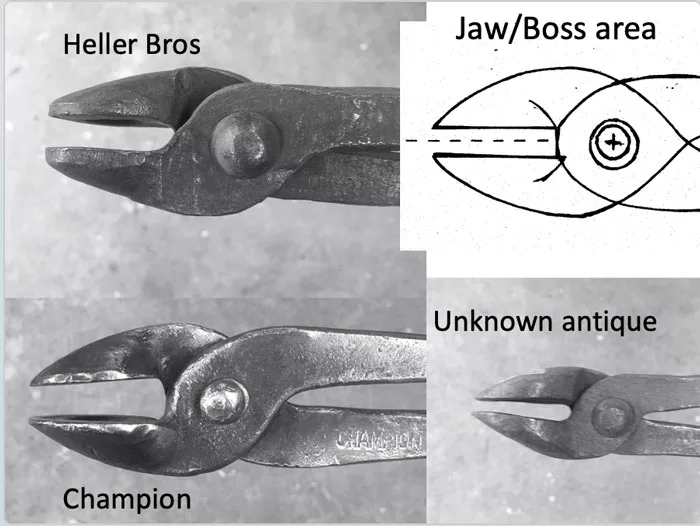Tool design is critical to not only completing your hoof-care work, but also has a tremendous bearing on your efficiency. One Hall of Fame farrier suggests becoming familiar with the influence of the industry’s pioneers.
Dennis Manning cites Charles Holmes, HonFWCF, who wrote in 1928, “Heavy tongs are no stronger than light ones and heavy tongs can tire you out before the day’s over.”
Examining three antique tongs (above), Manning identifies a commonality with each tool’s boss-jaw area. The distance between the holding area of the jaw and rivet should be as short as possible.
“So the jaw, rivet and reins act as the low fulcrum effort, giving a mechanical advantage,” explains the Roosevelt, Utah, farrier. “You get a more powerful grip, with less effort and less strength. A very full strong boss area, leading the jaw into that rivet area, so that the set of your tongs, in whatever size, stays the same because of that strong area.”
Manning continues that the well-crafted design has a smooth flowing rein, preventing the tool from catching on anything going in and out of the fire. The total length should not surpass 14-15 inches. A longer length limits the tool’s maneuverability. The jaw should release easily when the grip is relaxed.
“If you can have your fist comfortably closed, it takes that strain out of it,” Manning says. “Little, simple things that we need to keep in mind — the basic principles that the giants who went ahead of us understood. Why do we ignore them?”
Learn More
- Good Horseshoeing Seen from the Shoulders of the Giants: Every aspect of farrier knowledge has been developed through the work of horseshoers who came before.
- Making a Hoof Pick: Watch Hall Of Fame shoer Dennis Manning of Roosevelt, Utah, forge a hoof pick.
- Understand Metallurgy, Improve Your Forging Skills: Dennis Manning demonstrates the benefits of knowing how your stock works.








